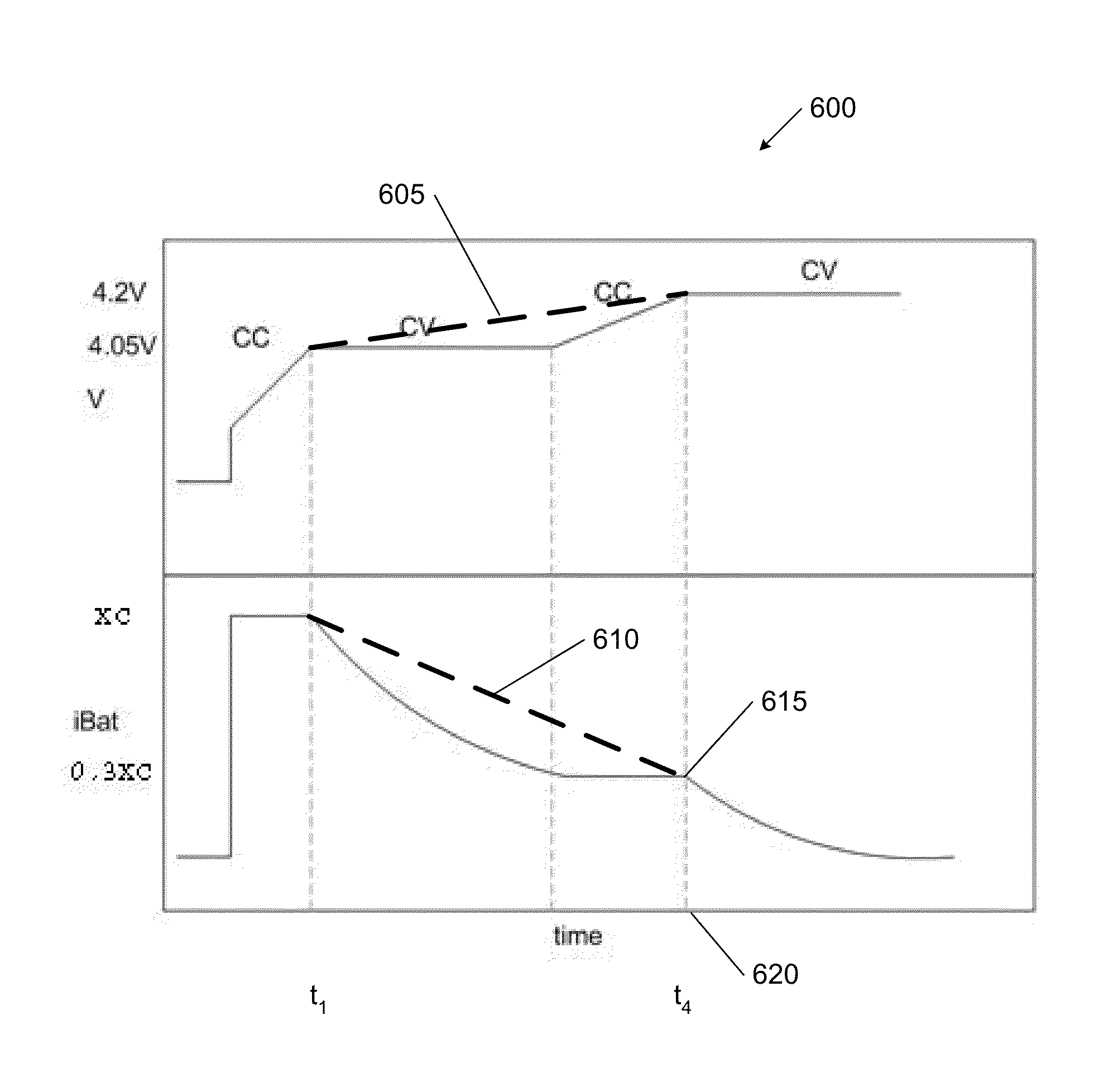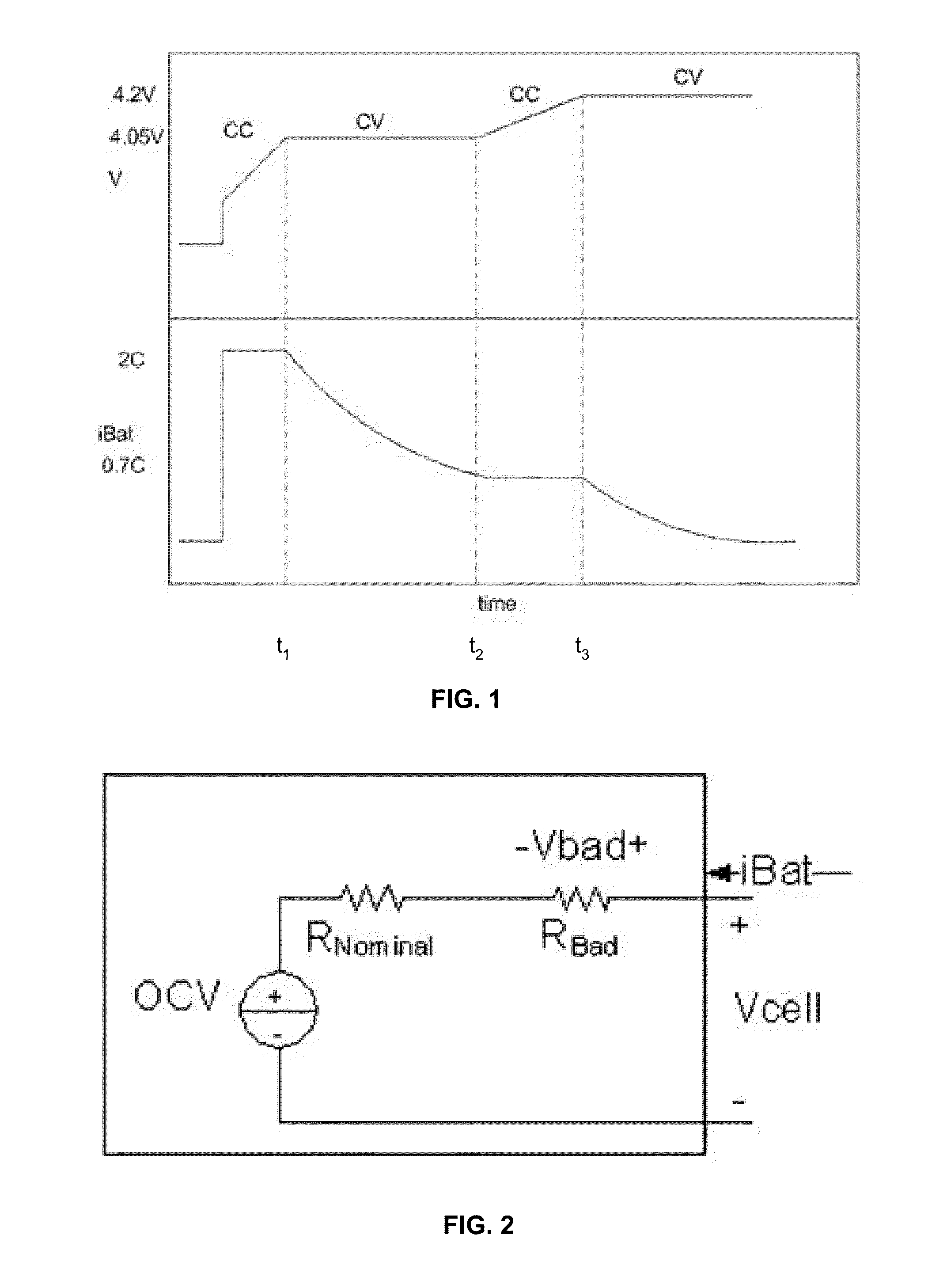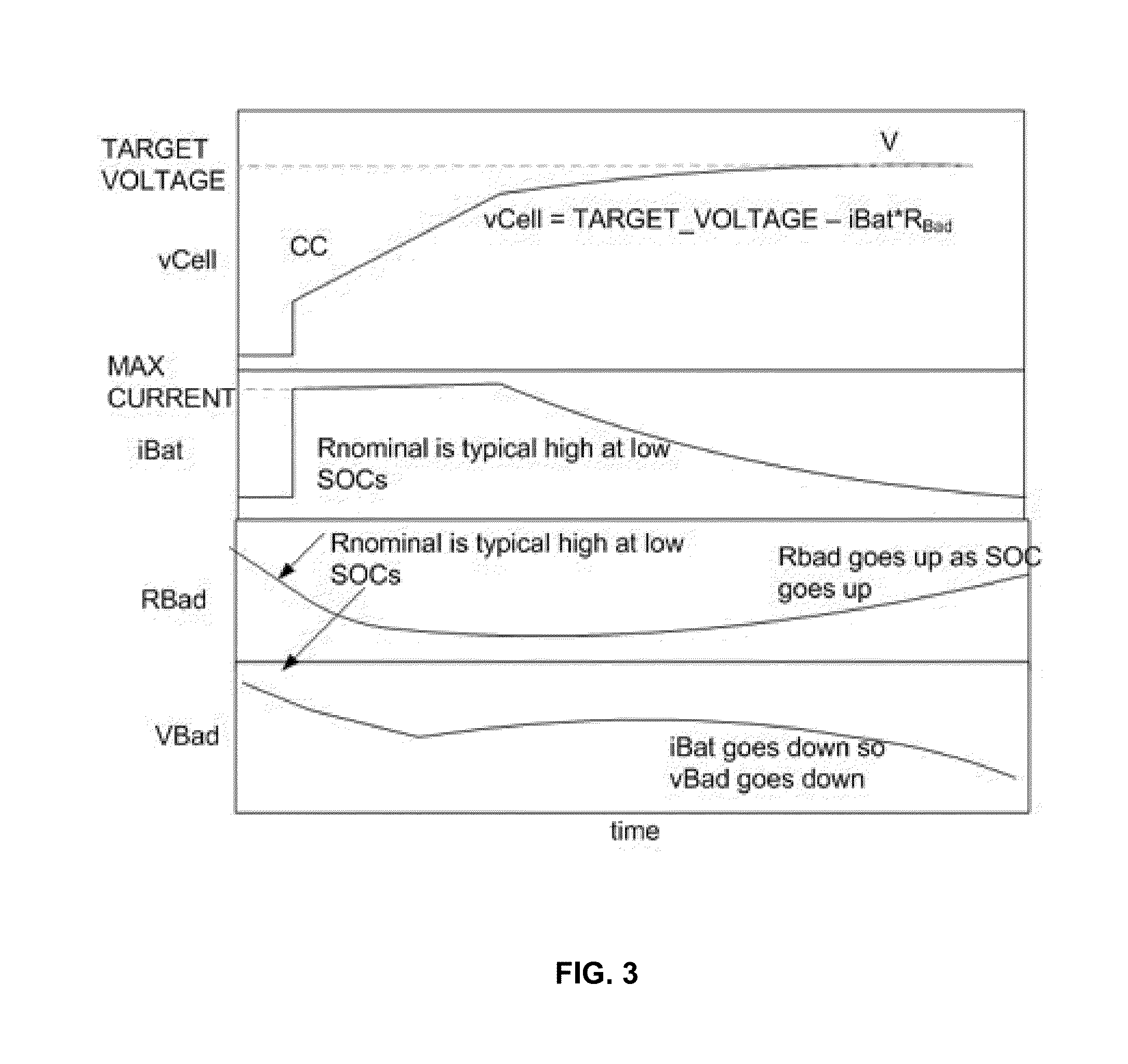Fast charging with negative ramped current profile
a technology of ramped current and negative current, which is applied in the direction of electric vehicles, transportation and packaging, electric power, etc., can solve the problems of increasing the time it takes to fully charge the battery cell, changing the resistance of the various resistance elements, and potentially dangerous failure of lithium-ion batteries. to achieve the effect of reducing the time for fully charging lithium-ion batteries
- Summary
- Abstract
- Description
- Claims
- Application Information
AI Technical Summary
Benefits of technology
Problems solved by technology
Method used
Image
Examples
Embodiment Construction
[0030]Embodiments of the present invention provide a system and method for a fast battery charger, particularly for lithium-ion battery cells while reducing / eliminating the impact of fast charging on cycle life. The following description is presented to enable one of ordinary skill in the art to make and use the invention and is provided in the context of a patent application and its requirements. Various modifications to the preferred embodiment and the generic principles and features described herein will be readily apparent to those skilled in the art. Thus, the present invention is not intended to be limited to the embodiment shown but is to be accorded the widest scope consistent with the principles and features described herein.
[0031]FIG. 1 is a chart of a simplified multistage fast charge profile for a battery charger. The preferred embodiment for the fast charge profile includes at least four stages: a CC (constant current) first stage, a constant voltage (CV) second stage; ...
PUM
 Login to View More
Login to View More Abstract
Description
Claims
Application Information
 Login to View More
Login to View More - R&D
- Intellectual Property
- Life Sciences
- Materials
- Tech Scout
- Unparalleled Data Quality
- Higher Quality Content
- 60% Fewer Hallucinations
Browse by: Latest US Patents, China's latest patents, Technical Efficacy Thesaurus, Application Domain, Technology Topic, Popular Technical Reports.
© 2025 PatSnap. All rights reserved.Legal|Privacy policy|Modern Slavery Act Transparency Statement|Sitemap|About US| Contact US: help@patsnap.com



